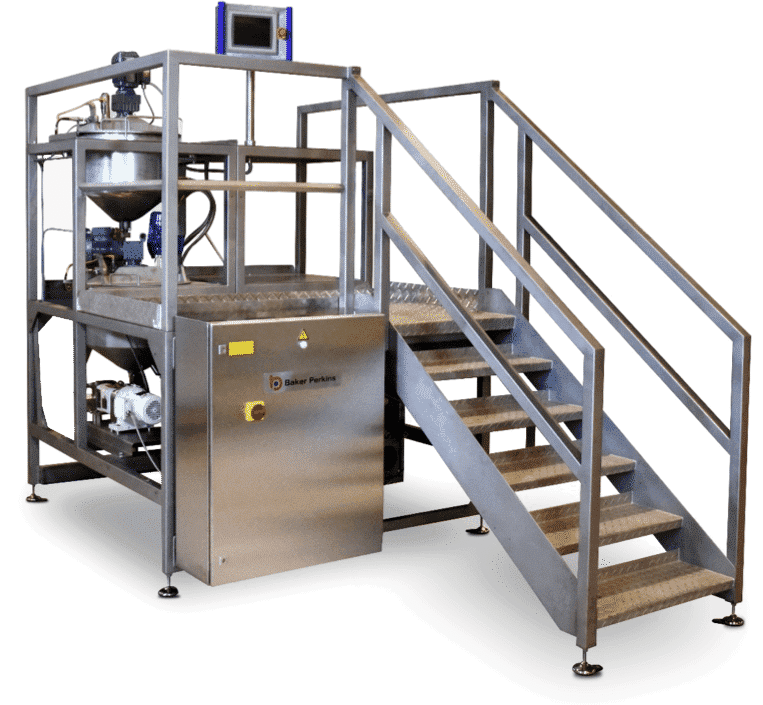Batch Cookers
The Batch Cookers are the market-leading solution for weighing, mixing, and cooking pectin or gelatin syrups for volumes of up to 25,000 edibles per hour. GMP-forward and FDA-approved, the Batch Cookers are made to accommodate a wide variety of recipes and scenarios. Among other features, a variable, high-shear mixer ensures consistent dispersion, scrapers ensure even heating, and easy-access points allow ingredients to be added automatically or on-the-fly. All lines and bins after the cooking vessels are insulated so the cooking temperature can remain as low as possible.
As with the rest of the edible manufacturing line, the Batch Cookers are extremely easy to operate. They feature intuitive HMIs, guided cooking prompts, and intelligent control systems—connected to load cells—which can notify operators of improper ratios and prevent wasted batches.
The Batch Cookers were developed for the bud industry and are broken out into three configurations to allow single or dual-syrup products. All models are designed to cook in batches but feed the depositor continuously (continuous cooking skids are available as separate products).
The Standard model includes one cooker and one reservoir for batch processing of single-syrup products. The single cooker processes 66-lb. batches. Because the depositor must receive a steady flow of product, the 99-lb. reservoir stages the syrup while maintaining its temperature.
The Max model entails two cookers and one reservoir for batch processing of single-syrup products when the depositor would out-pace a single cooker. This could occur due to high throughputs or when recipes require long cook times.
The Duo Max model includes two cookers and two reservoirs for dual-syrup products. Each syrup is heated, stored, and fed to the depositor separately, where it is dispensed as layers, swirls, or center-fills. The benefit of center-fills is that they can be held at much lower temperatures (150° F) which provides a safe medium for distillate where it can be sure to hold all of its potency.
Continuous cooking skids are steam-based (as opposed to oil-heated) and entail three main components: a mixing vessel, a continuous cooking skid, and a feeding system. The benefit of continuous skids are they are less expensive, more efficient, and more automated, but make it more difficult to satisfy the traceability demands of the government.)
